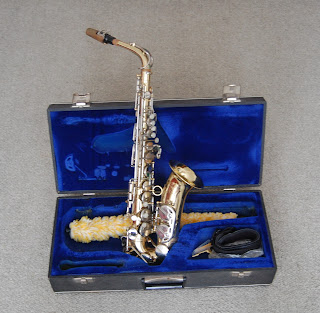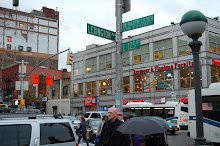Tuesday, May 11, 2010
Back at the workshop...
Wednesday, May 05, 2010
The Scratch Orchestra rides again
Tuesday, April 27, 2010
Metal Machine Trio tour, April 2010
If you missed the tour, here is You Tube footage from their appearance in Copenhagen on April 24th 2010:
Monday, April 12, 2010
Fiction about music
Monday, April 05, 2010
Eddie Prevost's Workshop (Part 2: Modus operandi)

Monday, March 29, 2010
Buddha Machines proliferate...
It came preprogrammed with nine different loops, each having an ambient quality about it that induced tranquility in the listener. A loop could be played indefinitely until the listened got bored and changed loop, or until the batteries (two AA's) ran down. Fans likened the endless repitition of the loops to locked-groove recordings such as those at the end of Sergeant Pepper or Metal Machine Music. Critics complained that the sound from the machine's speaker was rather thin and tinny. However, it was beautifully simple to operate, with nothing else to buy to make it work. The Buddha Machine developed a cult following and caught on rapidly.
The original Buddha Machine was followed in autumn 2008 (again, you will notice, in time for the stocking-filler market) by Buddha Machine II which added the innovation that the speed - and, hence, the pitch - of loops could be controlled by rotating a small dial. In other respects, it was not radically different to the original. That had sold tens of thousands - why change a winning formula?
Toto, I don't think we're in Kansas anymore...
Saturday, March 27, 2010
Eddie Prevost's Workshop (Part 1: Some history)
So, let's start with some background. I play alto saxophone and have done for over twenty-five years, although in that time I've not played much with other people. This used to be because in my head I wanted to sound like Lee Konitz but in my heart I knew I didn't. For a period in the nineties, I attended evening lessons at which I participated in a saxophone quartet. Eventually - my children were young then - I dropped out due to lack of time, not inclination. When my daughter Hannah was in her teens, she took over my sax for several years and attended weekly lessons. Gallingly, she could soon play better than I could!
As well as scored parts, including a unison grand finale on London Bridge conducted by John Harle, Leviathan had scope for free-blowing sections. In practising for these, I discovered I enjoyed it. I had finally got Lee Konitz out of my head. (No offence, Lee. I still adore your music and would love to interview you one day.)
To be continued...
Thursday, March 25, 2010
Hairy Bones: Peter Brotzmann and Toshinori Kondo together
Hairy Bones is the quartet of Peter Brotzmann on reeds, Toshinori Kondo on trumpet, Massimo Pupillo on electric bass and Paal Nilssen-Love on drums. The quartet is named after a CD they released in 2009 on Okka Disk.
 On arrival, there were warning signs of how the evening would progress, as cotton wool ear plugs were being handed out by Vortex staff. As the staff had been present at the soundcheck, they knew what they were doing...
On arrival, there were warning signs of how the evening would progress, as cotton wool ear plugs were being handed out by Vortex staff. As the staff had been present at the soundcheck, they knew what they were doing...As ever with Brotzmann, he generated a righteous blast that energised the rest of the band. Kondo was always ready to answer in kind. As we know from the Die Like a Dog band, the combination of Brotzmann and Kondo is a pairing made in heaven - so much so that it set me musing on other such sax/trumpet pairs. Ornette Coleman and Don Cherry named an album Twins in recognition of the bond between them. Other similarly close partnerships that come to mind are Bird/Diz, 'Trane/Miles, Mulligan/Baker, Rollins/Brown, Branford/Wynton Marsalis, Evan Parker/KennyWheeler. Any more spring to mind?




